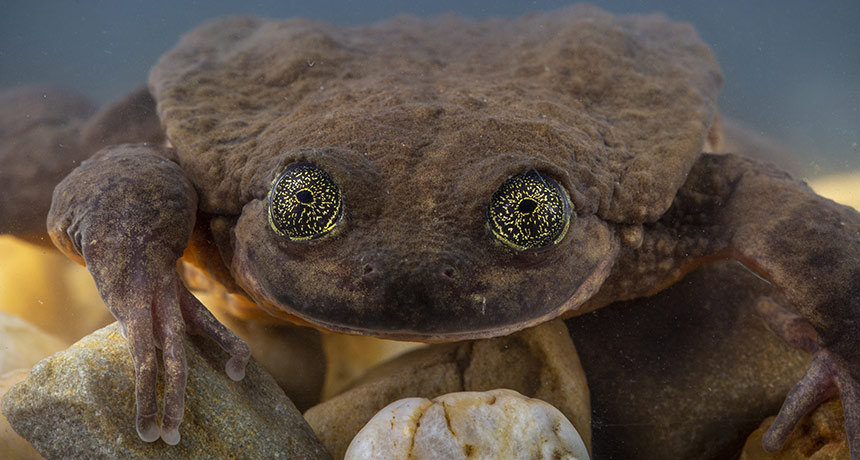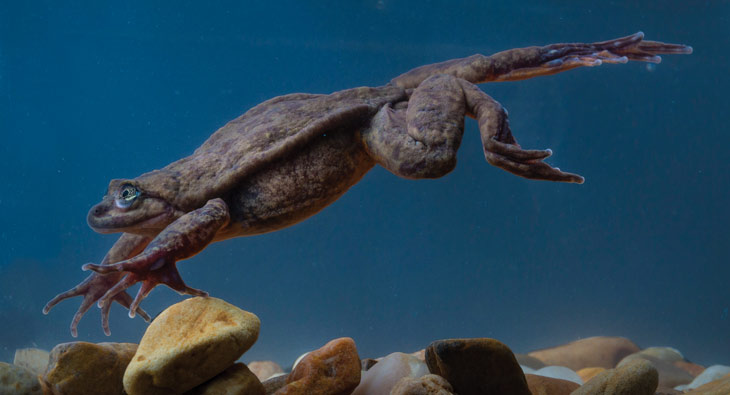amphibians A group of animals that includes frogs, salamanders and caecilians. Amphibians have backbones and can breathe through their skin. Unlike reptiles, birds and mammals, unborn or unhatched amphibians do not develop in a special protective sac called an amniotic sac.
breed (noun) Animals within the same species that are so genetically similar that they produce reliable and characteristic traits. German shepherds and dachshunds, for instance, are examples of dog breeds. (verb) To produce offspring through reproduction.
chytrid fungus A common shortened name for a fungus — Batrachochytrium dendrobatidis — that can induce a lethal infection in amphibians, especially frogs. The formal name of the infection is chytridiomycosis.
climate The weather conditions that typically exist in one area, in general, or over a long period.
cloud forest One of the more threatened tropical ecosystems, these are mist-shrouded rainforests that can develop high up along the sides of steep volcanic mountains. Because they have traditionally been hard to reach, they have tended to maintain a rich diversity of species.
conservation The act of preserving or protecting something. The focus of this work can range from art objects to endangered species and other aspects of the natural environment.
ecology A branch of biology that deals with the relations of organisms to one another and to their physical surroundings. A scientist who works in this field is called an ecologist.
environment The sum of all of the things that exist around some organism or the process and the condition those things create. Environment may refer to the weather and ecosystem in which some animal lives, or, perhaps, the temperature and humidity (or even the placement of things in the vicinity of an item of interest).
extinct An adjective that describes a species for which there are no living members.
fungus (plural: fungi) One of a group of single- or multiple-celled organisms that reproduce via spores and feed on living or decaying organic matter. Examples include mold, yeasts and mushrooms.
genetic Having to do with chromosomes, DNA and the genes contained within DNA. The field of science dealing with these biological instructions is known as genetics. People who work in this field are geneticists.
habitat The area or natural environment in which an animal or plant normally lives, such as a desert, coral reef or freshwater lake. A habitat can be home to thousands of different species.
herpetology The biology of reptiles and amphibians. Scientists who work in this field are known as herpetologists.
host (in biology and medicine) The organism (or environment) in which some other thing resides. Humans may be a temporary host for food-poisoning germs or other infective agents.
immunity The ability of an organism to resist a particular infection or poison by providing cells to remove, kill or disarm the dangerous substance or infectious germ. Or, when used colloquially, it means the ability to avoid some other type of adverse impact (such as firing from a job or being bullied).
infect To spread a disease from one organism to another. This usually involves introducing some sort of disease-causing germ to an individual.
marsupial frogs A group of species that don’t produce free-swimming tadpoles. Their young develop from eggs into tiny froglets within a pouch on their mother's body. Scientists describe this as direct development.
native Associated with a particular location; native plants and animals have been found in a particular location since recorded history began. These species also tend to have developed within a region, occurring there naturally (not because they were planted or moved there by people). Most are particularly well adapted to their environment.
population (in biology) A group of individuals from the same species that lives in the same area.
species A group of similar organisms capable of producing offspring that can survive and reproduce.









